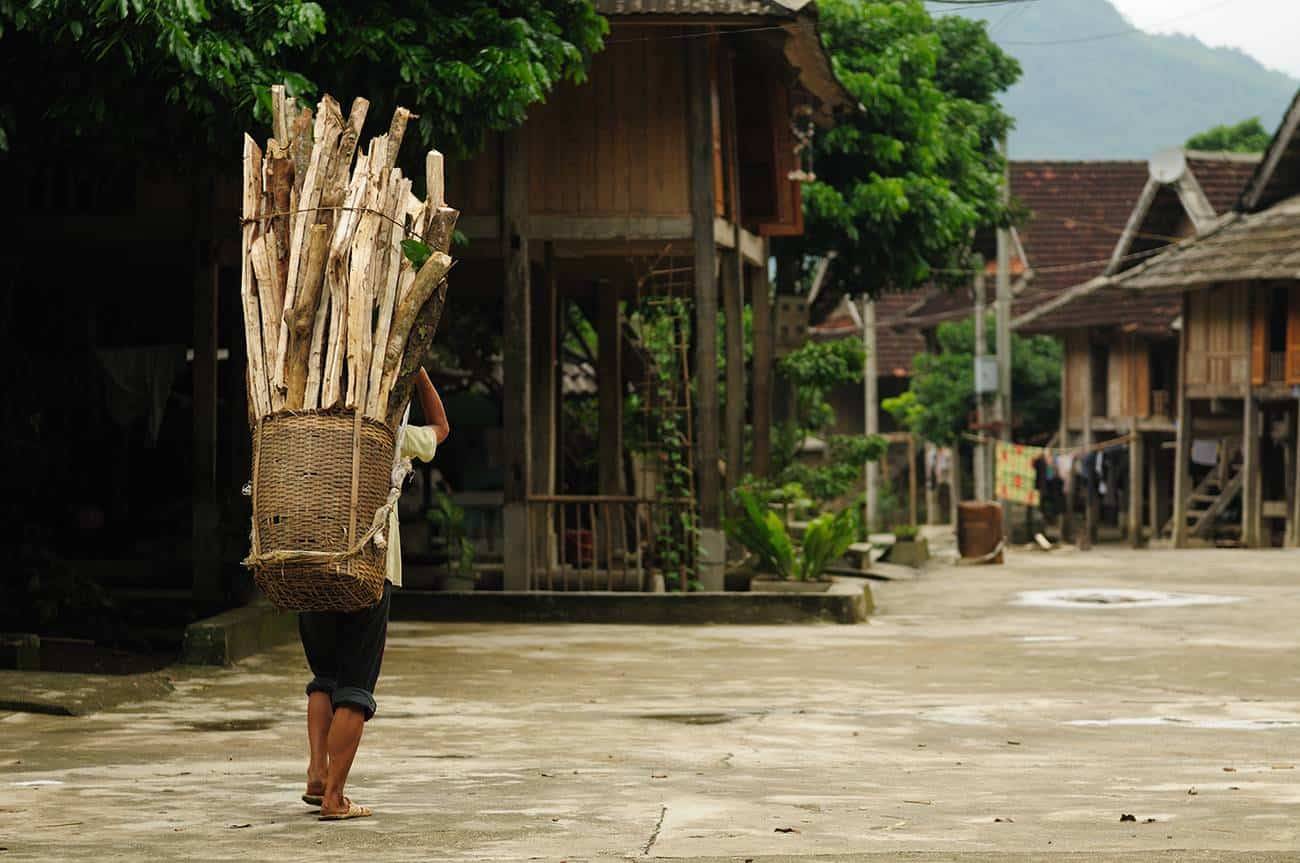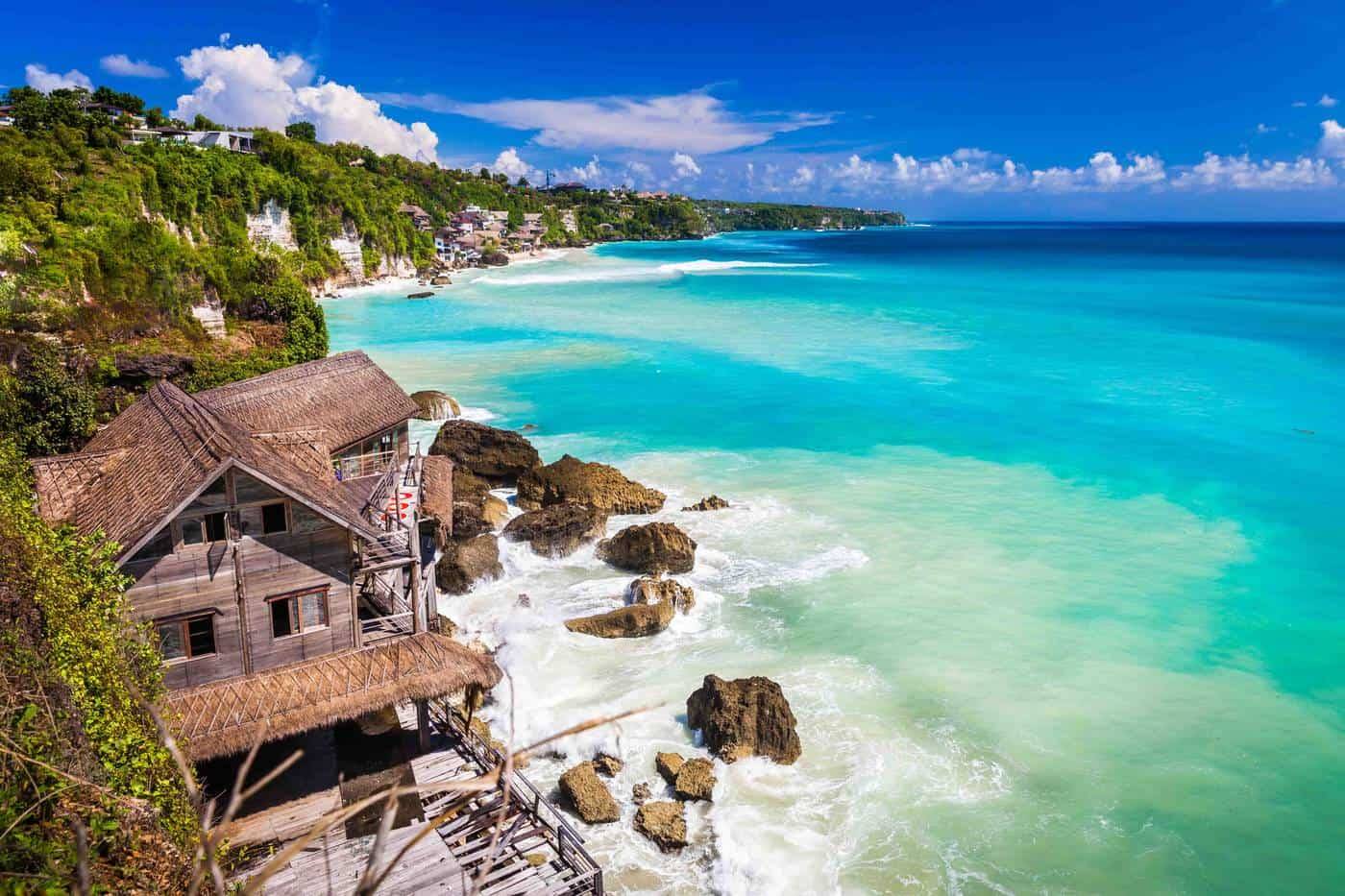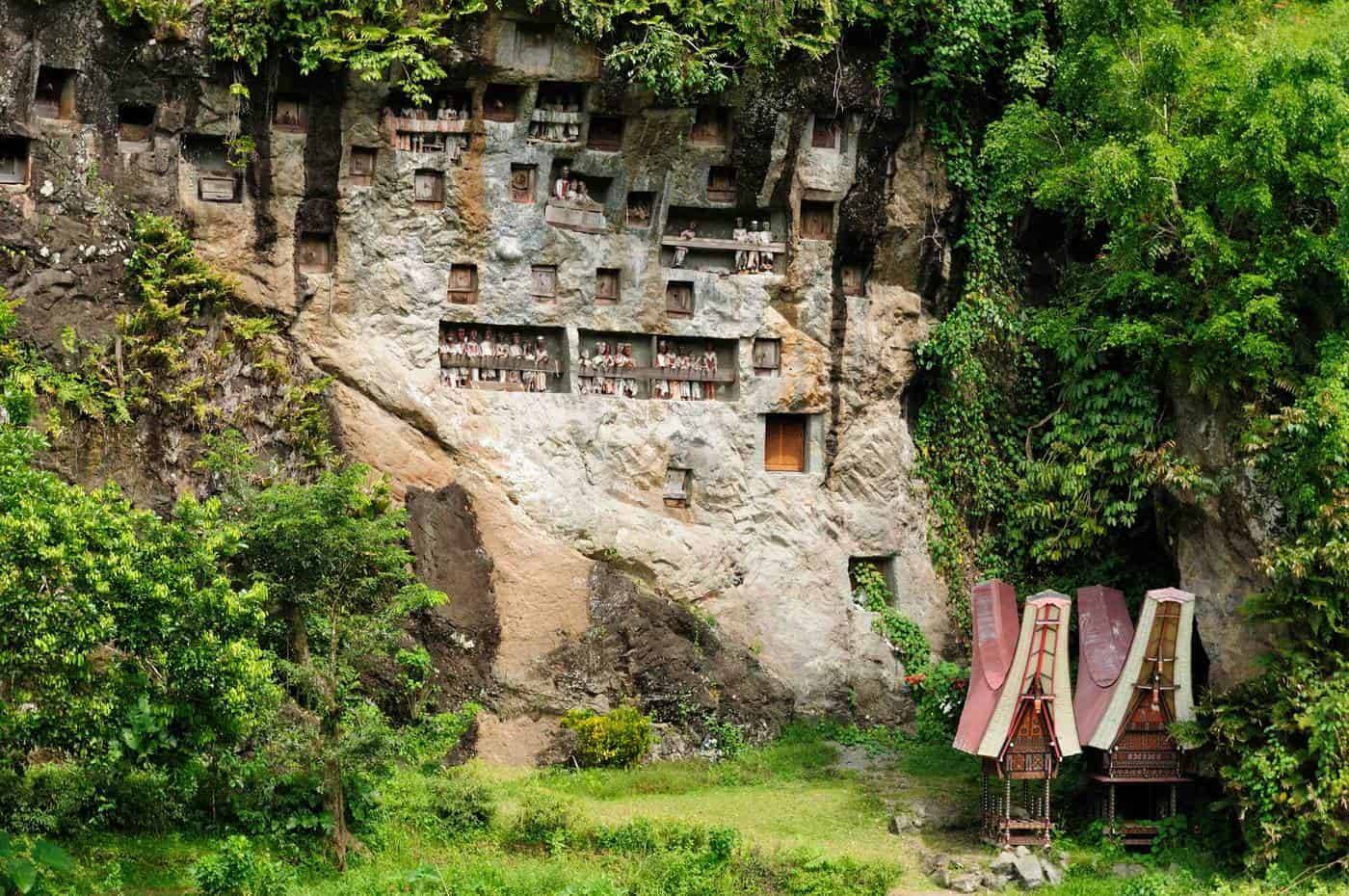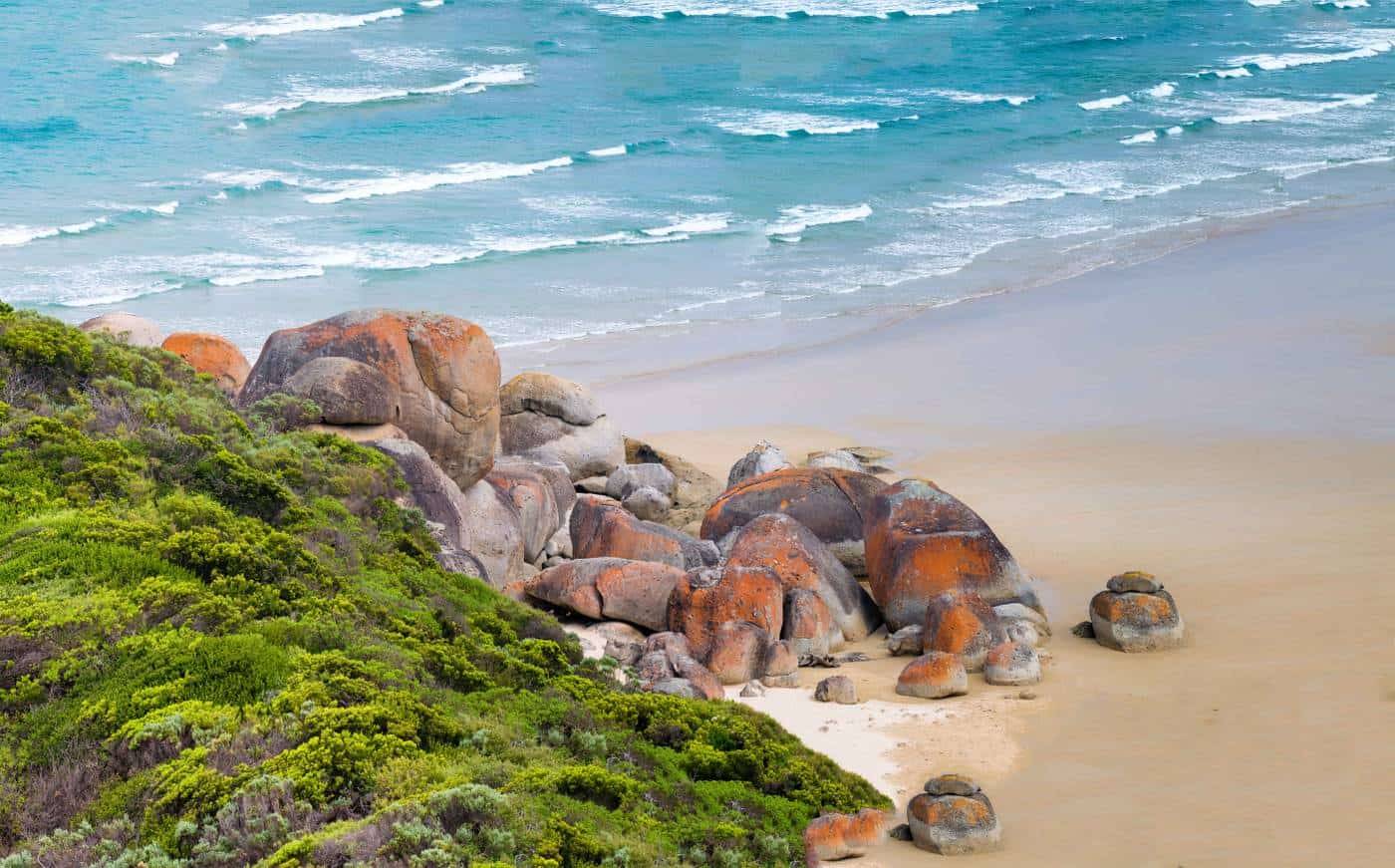
GIPPSLAND COAST : AUSTRALIA`S FORGOTTEN COAST
The Gippsland region is mostly known for quiet lakes, inlets, river mouths and long, empty stretches of golden sands. Although crowds of tourists hit the legendary Great Ocean Road all year round, there are many others, who prefer to discover the seemingly endless Ninety Mile Beach – the third-longest uninterrupted beach on earth, and glowing plankton – the best-kept secret of the Gippsland Coast
Expanding across more than a half of the Victorian shores, from Melbourne to the border with New South Wales, the Gippsland Coast region features various landscapes, ranging from marine reserves, alpine national parks, coastal lagoons and inlets and forest reserves and unspoiled coastal scenery with abundant wildlife and sea life.

WILSONS PROMONTORY NATIONAL PARK
The southernmost national park in Australia and the closest one to Tasmania is defined by lush forest and stunning coastal landscape. The gorgeous beaches, untamed forest and their fauna attract many bushwalkers, campers and outdoor lovers, especially at Tidal River. Nestled in the dunes of Norman Bay the place offers spectacular coastal views and walking tracks.
This is a place to visit if you are interested in Australian wildlife, including wombats, wallabies, echidnas, emus, koalas, possums but also the seasonal whales, killer whales, dolphins, sea lions, seals, and penguins. Mount Oberon and Mount Bishop summit can be climbed to enjoy the coastal images to the fullest extent.

ESSENTIAL EXPERIENCES IN WILSONS PROMONTORY NATIONAL PARK
- Beaches – Norman Bay, Whisky Bay, Squeaky Beach, Waterloo Beach, Sealers Cove
- Camping – Tidal River has a great campground and excellent facilities
- Walking – Great Prom Walk (4 days/3 nights or in sections) – breathtaking views, amazing walking trail, the Wilsons Promontory Lighthouse (18 km one way from Tidal River, there is accommodation available at the lighthouse for the walkers)
- Hiking – Mt Oberon (2 hrs return) and Mt Bishop (1.5 hrs return)
- Wildlife – the reserve is not only home to the Aussie`s Big Six – koalas, emus, kangaroos, wallabies, wombats, echidnas, but also abundant marine life, e.g. seals, dolphins, and humpback whales (whale watching is possible from June till September)

jjj
STRZELECKI RANGES
The Strzelecki Ranges protected area consists of Tarra-Bulga, Morwell and Mount Worth National Parks, with the highest peak Mount Tassie (740 m). The area is a mosaic of dense forest and mountain ash trees. The locality has become popular with motorists for the Grand Ridge Road Scenic Drive, stretching over 135 km of Gippsland`s splendid hinterland landscapes.

The countryside of Warragul and Traralgon has many natural attractions, walking tracks and wildlife and it offers views of Gippsland, Latrobe Valley and the Great Dividing Range.
The southern end of the Victorian Snowfields is home to the Baw Baw National Park covered with characteristic grassland, plains and woodland. Walhalla is the old gold mining town with a great heritage and historic railway, and it is the gateway to the park. Thomson River and Dam offer great water activities, bushwalking and camping.

ESSENTIAL EXPERIENCES IN STRZELECKI RANGES
- Tarra Bulga National Park – Tarra Valley Rainforest Walk and Fern Gully Nature Walkare both nice short walks through lovely greenery with waterfalls, Corrigan Suspension Bridge Loop Walk and Mount Tassie Great Circuit (23 km/6 hrs)
- Mount Worth State Park – The Giant`s Circuit and McDonald`s Lookout Track are both short walks with ancient trees and great views, Moonlight Circuit (3 hrs return)
- Morwell National Park – Fosters Gully Nature Walk (1 hr return), Kerry Picnic Area and good camping
- Baw Baw National Park – Mt Baw Baw Summit Walk (2hrs return), Walhalla Goldfields Trail (14 km return), Mushroom Rocks, (2 hrs return), Mt Gwinear Track (2 hrs return)
- Grand Strzelecki Track – the famous trail through the whole length of the range and its most beautiful spots (100km/3-4 days or in sections)
- Grand Ridge Road Scenic Drive – one of the most spectacular tourist drives in Victoria is stretching over 135 km of Gippsland`s highlights (it also is a gorgeous cycling trail)

THE GIPPSLAND LAKES COASTAL PARK
The major hub for tourism and the favourite summer holiday destination in Gippsland is surely the Gippsland Lakes Coastal National Park. The large network of lakes provides perfect conditions for water sports, fishing, boating and swimming.
Besides, the coastal reserve stretches along the famous Ninety Mile Beach, also known as “The Long Beach Down Under”. It is an untamed, 90 miles-long unbroken stretch of powder-soft sand with mighty surf of the Tasman Sea. Ninety Mile Beach is the third-longest uninterrupted beach on earth.

The largest and most visited lakes are Lake Wellington, Lake King and Lake Victoria. On summer nights, the visitors can enjoy quite an extraordinary experience – swim with the bioluminescent plankton.
The town of Lakes Entrance is the gateway to the recreational area with plentiful resorts, hotels and facilities, and a nice visitors centre. Metung and Paynesville are both upmarket resort towns, surrounded by water and small yacht ports.

ESSENTIAL EXPERIENCES IN THE GIPPSLAND LAKES COASTAL PARK
- Lakes Entrance (access to both the Lakes and the 90 Mile Beach) – plentiful tours & cruises, golfing, surfing, boat hire, shops and restaurants
- Metung and Paynesville (both lake facing) – dining, art galleries, shopping
- Raymond Island –a large koala population (access via ferry from Paynesville)
- Lake Wellington, Lake Victoria, Lake King – ideal for camping, swimming, fishing, kayaking, canoeing and boating (look for the glowing plankton at night!)
- Campgrounds: Paradise Beach, Golden Beach, Loch Sport, Spoon Bay and Red Bluff
- Short Walks: Whistling Kite Track, Homestead Track, Cliff Top Walk, Kurrajong Track, Salt Marsh Track

SNOWY RIVER NATIONAL PARK
The Snowy River region is an important area for the indigenous people with numerous sacred sites. Its remoteness indicates that one will find wilderness and pristine nature.
Indeed, the Snowy River typical of is magnificent forests, rugged gorges and wild rivers, and well-known by extreme water sports lovers, particularly rafting and canoeing. The adventurers will be rewarded with terrific scenery, canyons and white sandy beaches with rock pools between the rapids.
Mc Killops Bridge is the starting point to the park with great camping facilities and most of the walking and rafting trails.

ESSENTIAL EXPERIENCES IN SNOWY RIVER NATIONAL PARK
- Mc Killops Bridge and Deddick River – excellent canoeing and rafting
- Raymond Creek Falls – a short walk starting from Orbost at Moorsford Road, good camping as well
- Little River Gorge – the deepest gorge in Victoria, a nice walk and lookout
- Booley Hooley and Jacksons Crossing – the best camping spots in the area
- White Water Rafting – the best section is betweenMcKillops Bridge and Balley Hooley (3 days minimum)
- Buchan Caves – beautiful limestone caves and very well-maintained cave complex, suitable for families and children
- Snowy River Great Scenic Drive – the 300 km long circuit takes you through the main attractions, and it usually takes 2-3 days (Buchan-Wulgulmerang East-Deddick Valley-Tubbut-Goongerah-Nurran-Orbost-Nowa Nowa)

TRAVEL TIP
The best way to explore Gippsland High Country is the Great Alpine Road. The scenic drive will take you through the wine region of King Valley, historic Beechworth, Bright and Omeo, all the way up to the Alpine National Park, – The best time to visit is spring (unless you are after skiing) when wildflowers cover the entire area. (500 km/3 days).
Suggested time for the journey is 5-7 days.
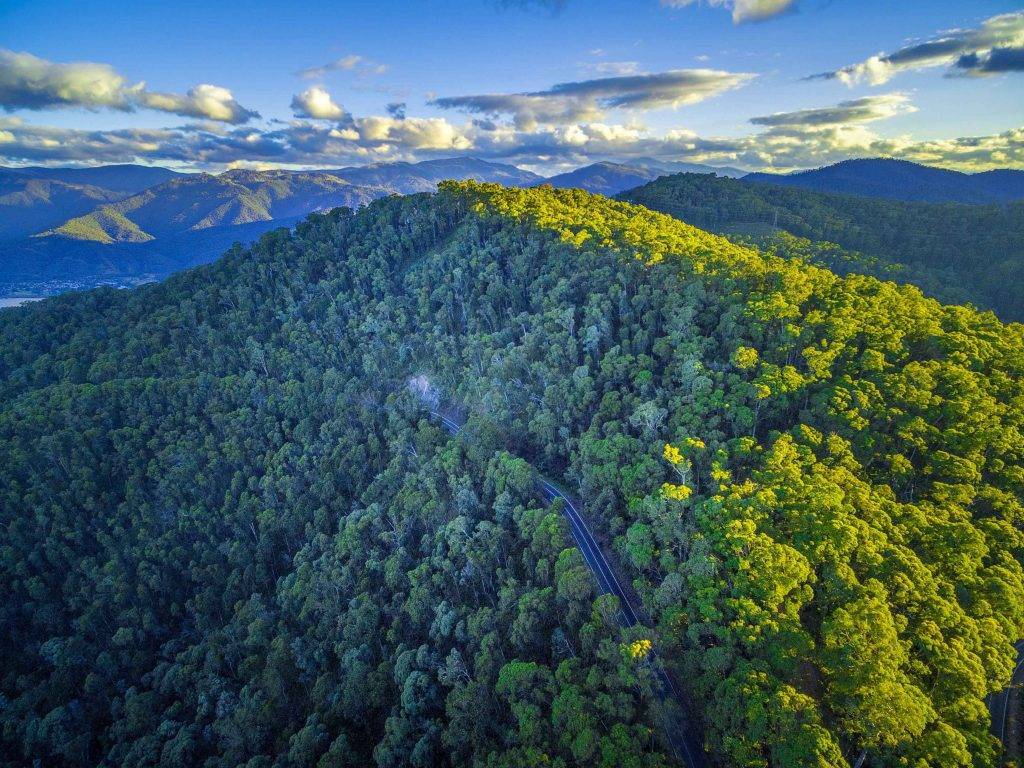
CROAJINGOLONG NATIONAL PARK
One of the most alluring coastal parks in Australia has been added to the UNESCO Biosphere Reserve list. The reserve features an extraordinary diversity of landscapes, ranging from white sandy beaches, rocky coastal headlands and granite peaks, to heathland and eucalyptus forest, with endangered species of birds.
Walking and water sports opportunities cater for nature lovers, but also scuba diving, snorkelling, bird watching, mountain biking, swimming, surfing, fishing, kayaking, boating and photographing are popular reasons to visit the Croajingolong National Park.
The Croajingolong National Park borders with New South Wales, and it partially overlaps with the Sapphire Coast.
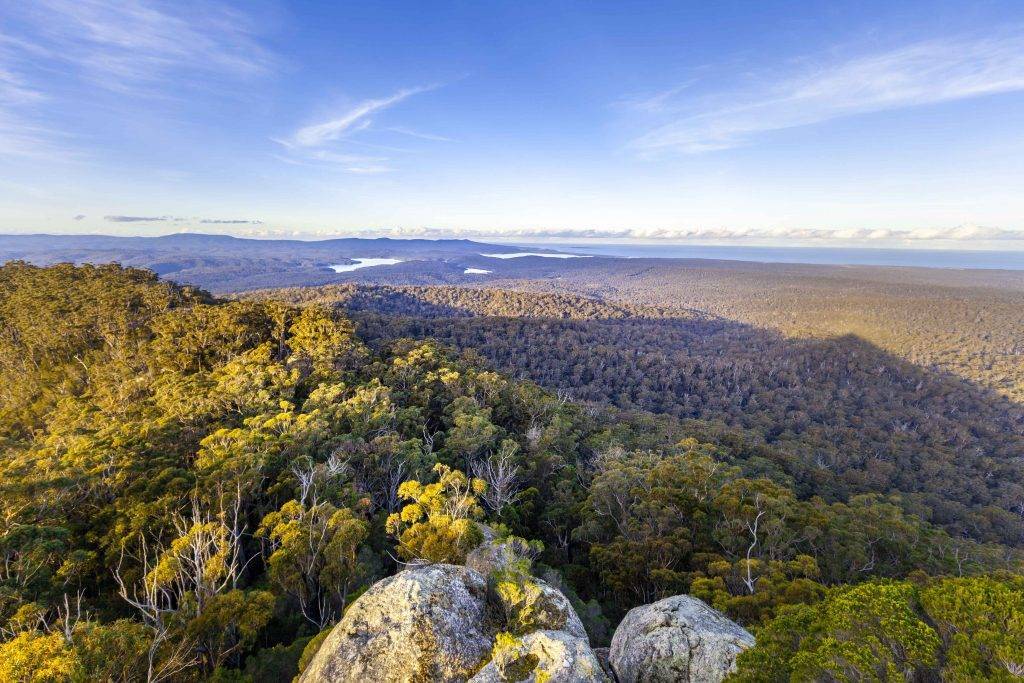
ESSENTIAL EXPERIENCES IN CROAJINGOLONG NATIONAL PARK
- Mallacoota – the main town and the favourite holiday resort during the summertime with good accommodation and facilities, coastal walks, beaches, lakes
- Genoa Peak – a lovely walk to the summit, 1.5 km hike one way, amazing views
- Point Hicks walks – Dunes Walk (2hrs return), Mueller Inlet (1.5hrs return), Point Hicks Lighthouse (1.5 hrs return), Saros Track (45 min return), Sledge and West Beach Track (1 hr return), Mt Everard (1 hr return)
- Thurra River – marvellous dunes, Mueller Inlet & Thurra River campgrounds
- Wilderness Coastal Walk (40-70 km) – from Thurra River to Shipwreck Creek, multiple-day tracks, it can be done in sections (camping available on the trail)
- Tamboon Inlet walks – Clinton Rocks Walk (8km/4 hrs return), spectacular coastal scenery, dunes
- Wingan Inlet walks – Wingan River Rapids (2.5 hrs return), Fly Cove Walking Track (1.5 hrs return), Rame Head (3 hrs return), Elusive Lake (2 hrs return)

WHEN TO TRAVEL
The best time to travel to the Gippsland is in summer. Some areas might get busier during the Australian school holidays (mid-Dec-early Feb) but, generally, the region is rather quiet. The ideal time to visit is Feb-Mar (that is also the time when glowing plankton can be seen).
If you are driving Australia, you might be interested into our article about the Grampians and the sacred sandstone ranges, check it out!
HOW TO GET THERE
Fly to Melbourne. Hire a vehicle and drive towards Warragul.
For all flights visit www.momondo.com or www.skyscanner.com

